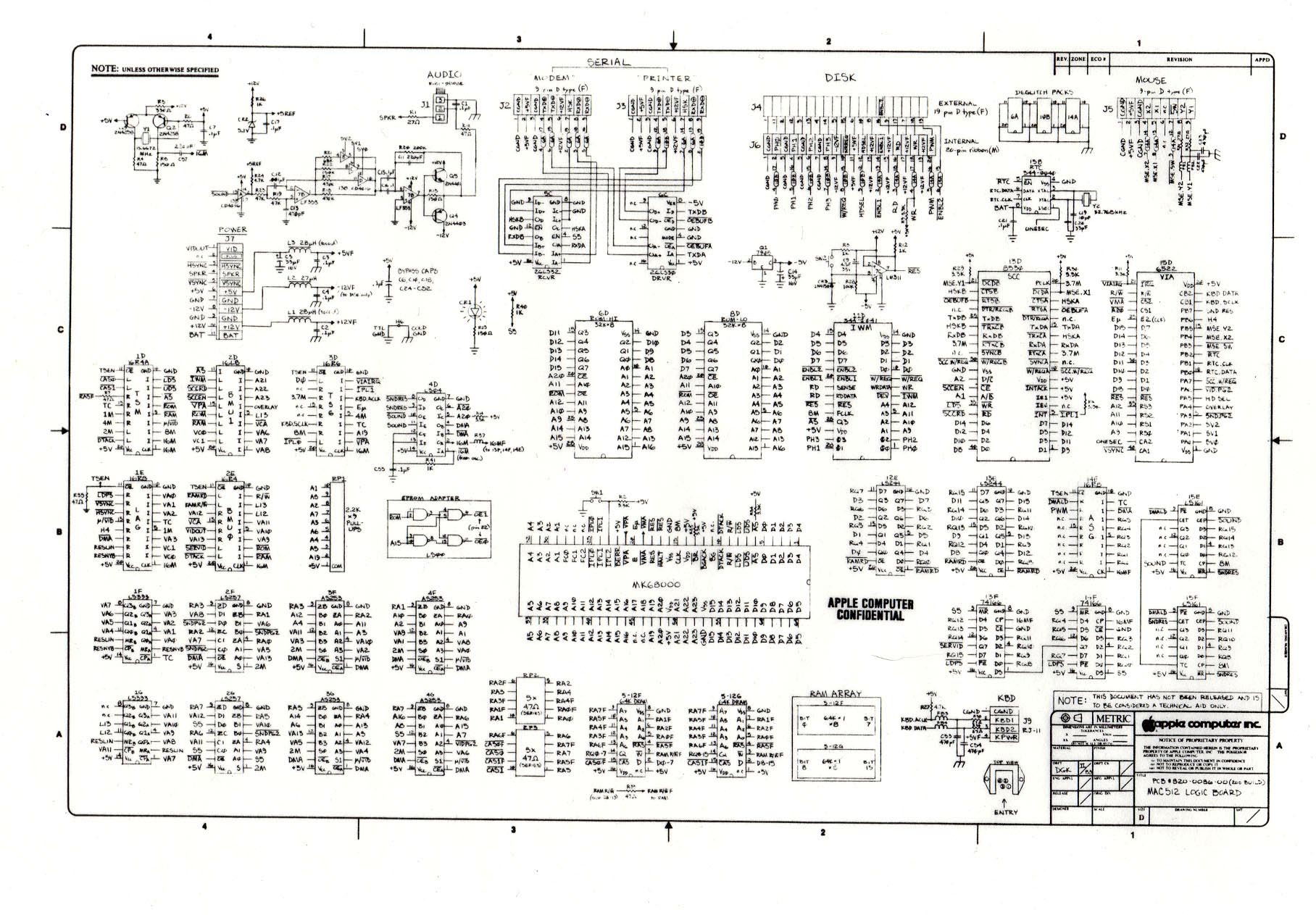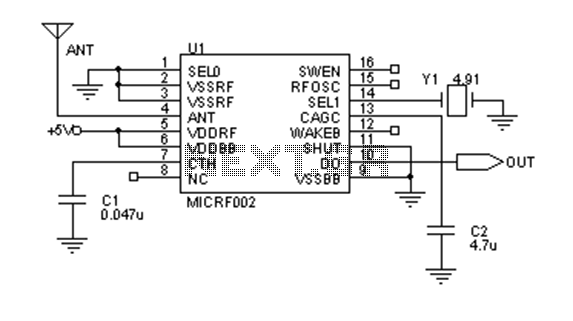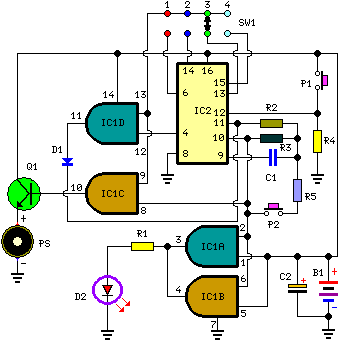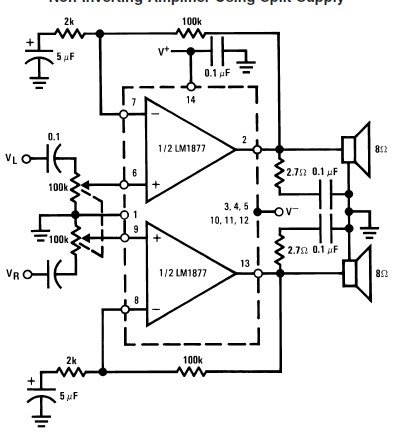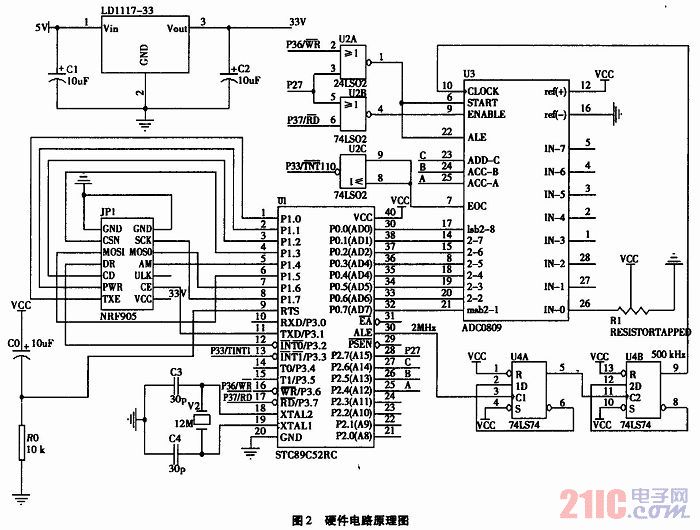
schematic how to write data on lcd

In the project, the LCD data ports are connected to port 1 of the controller, while the control pins, namely RS, E, and R/W, are connected to pins 3, 5, 6, and 2, 1 of the controller. The LCD is initialized to display data such as the clock. To facilitate time correction, a connection to a PC is established using the controller's serial port. Tracking the operation of various automated and semi-automated devices, including washing machines and autonomous robots, is essential. This is accomplished by displaying their status on a small display module. The Liquid Crystal Display (LCD) screen is a widely used display module, with the 16x2 LCD module being particularly common. These modules are increasingly replacing seven-segment displays and other multi-segment LEDs due to their cost-effectiveness, programmability, and ability to show special and custom characters, as well as animations. The LCD can be easily interfaced with a microcontroller to convey messages or device statuses. This topic covers the fundamentals of a 16x2 LCD and its interfacing with the AT89C51 microcontroller for character display, as well as how to interface a keypad and LCD with the 8051 microcontroller. Additionally, it includes instructions for displaying messages on an LCD and controlling a motor using the 8051. Numerous resources are available online detailing how to control the standard Hitachi HD44780 LCD with an 8051 microcontroller, including tutorials for interfacing the HD44780 with microcontrollers such as PIC, 8051, and AVR. The character-based LCD HD44780, including explanations of CGRAM and DDRAM with pinouts, is also covered. Furthermore, there are hardware interfacing tutorials for the 8051 microcontroller using assembly language code examples, detailing Display Data RAM (DDRAM) LCD commands, register busy states, and the interface program for the HD44780-based 16x2 LCD with the 8051 and AT89C51. Programming code and initialization sequences, as well as LCD cursor addresses, circuit diagrams, and pin diagrams, are provided. The LCD display is one of the most commonly attached devices to the 8051, with 16x2 and 20x2 displays being the most prevalent.
The 16x2 LCD module is designed to display two lines of 16 characters each, making it suitable for a variety of applications where user interaction or status updates are necessary. The interfacing process typically involves connecting the data pins of the LCD to the microcontroller's output pins, while the control pins manage the operation of the LCD. The RS (Register Select) pin determines whether the data being sent is command or character data; the E (Enable) pin is used to latch the data into the LCD, and the R/W (Read/Write) pin indicates the direction of data flow.
Initialization of the LCD involves sending a series of commands that set the display mode, cursor behavior, and other operational parameters. This is often done in a specific sequence to ensure the LCD is ready to receive and display data correctly. The microcontroller must also manage the timing of these commands, adhering to the timing specifications provided by the LCD manufacturer.
To enhance functionality, a keypad can be interfaced with the microcontroller, allowing user input to be processed and displayed on the LCD. This combination is particularly useful in applications such as menu selections, data entry, and device control. The integration of a serial port connection to a PC enables real-time data updates and corrections, such as adjusting the displayed clock time, further enhancing the system's usability.
In summary, the combination of the 16x2 LCD module with a microcontroller like the AT89C51 or 8051 provides a powerful solution for displaying information in various automated systems. The ability to customize displays, interface with user inputs, and connect to external devices makes this setup versatile for numerous applications.In our project LCD data ports are connected to the port 1 of the controller & its control pins i. e. : RS, E, R/W are connected to the pin 3. 5 3. 6 & 2. 1 of the controller. We initialize the LCD and it start showing data i. e. clock. In order to do the correction of time we also provide the connection with PC using serial port of the controller. It is very important to keep a track of the working of almost all the automated and semi-automated devices, be it a washing machine, an autonomous robot or anything else. This is achieved by displaying their status on a small display module. LCD (Liquid Crystal Display) screen is such a display module and a 16x2 LCD module is very commonly used.
These modules are replacing seven segments and other multi segment LEDs for these purposes. The reasons being: LCDs are economical, easily programmable, have no limitation of displaying special & even custom characters (unlike in seven segments), animations and so on. LCD can be easily interfaced with a microcontroller to display a message or status of a device. This topic explains the basics of a 16x2 LCD and how it can be interfaced with AT89C51 to display a character.
how to interface keypad and LCD with microcontroller 8051, How to show a message over a LCD and also moving a motor using a 8051, The Web is littered with examples of how to control the standard Hitachi-44780 LCD using an 8051 micro-controller. LCD type HD44780 interfacing tutorial with microcontroller PIC, 8051 and AVR. character based LCD HD44780 CGRAM and DDRAM explaination with pinouts. 8051 microcontroller hardware interfacing tutorials LCD Display with assembly language code example. Display Data RAM (DDRAM) LCD Commands, register busy, Interface-program HD44780u based 16x2 LCD using 8051, AT89C51.
Programming code and initialization sequence, LCD cursor address, ciruit diagram and pin diagram. One of the most common devices attached to an 8051 is an LCD display. Some of the most common LCDs connected to the 8051 are 16x2 and 20x2 displays. 🔗 External reference
The 16x2 LCD module is designed to display two lines of 16 characters each, making it suitable for a variety of applications where user interaction or status updates are necessary. The interfacing process typically involves connecting the data pins of the LCD to the microcontroller's output pins, while the control pins manage the operation of the LCD. The RS (Register Select) pin determines whether the data being sent is command or character data; the E (Enable) pin is used to latch the data into the LCD, and the R/W (Read/Write) pin indicates the direction of data flow.
Initialization of the LCD involves sending a series of commands that set the display mode, cursor behavior, and other operational parameters. This is often done in a specific sequence to ensure the LCD is ready to receive and display data correctly. The microcontroller must also manage the timing of these commands, adhering to the timing specifications provided by the LCD manufacturer.
To enhance functionality, a keypad can be interfaced with the microcontroller, allowing user input to be processed and displayed on the LCD. This combination is particularly useful in applications such as menu selections, data entry, and device control. The integration of a serial port connection to a PC enables real-time data updates and corrections, such as adjusting the displayed clock time, further enhancing the system's usability.
In summary, the combination of the 16x2 LCD module with a microcontroller like the AT89C51 or 8051 provides a powerful solution for displaying information in various automated systems. The ability to customize displays, interface with user inputs, and connect to external devices makes this setup versatile for numerous applications.In our project LCD data ports are connected to the port 1 of the controller & its control pins i. e. : RS, E, R/W are connected to the pin 3. 5 3. 6 & 2. 1 of the controller. We initialize the LCD and it start showing data i. e. clock. In order to do the correction of time we also provide the connection with PC using serial port of the controller. It is very important to keep a track of the working of almost all the automated and semi-automated devices, be it a washing machine, an autonomous robot or anything else. This is achieved by displaying their status on a small display module. LCD (Liquid Crystal Display) screen is such a display module and a 16x2 LCD module is very commonly used.
These modules are replacing seven segments and other multi segment LEDs for these purposes. The reasons being: LCDs are economical, easily programmable, have no limitation of displaying special & even custom characters (unlike in seven segments), animations and so on. LCD can be easily interfaced with a microcontroller to display a message or status of a device. This topic explains the basics of a 16x2 LCD and how it can be interfaced with AT89C51 to display a character.
how to interface keypad and LCD with microcontroller 8051, How to show a message over a LCD and also moving a motor using a 8051, The Web is littered with examples of how to control the standard Hitachi-44780 LCD using an 8051 micro-controller. LCD type HD44780 interfacing tutorial with microcontroller PIC, 8051 and AVR. character based LCD HD44780 CGRAM and DDRAM explaination with pinouts. 8051 microcontroller hardware interfacing tutorials LCD Display with assembly language code example. Display Data RAM (DDRAM) LCD Commands, register busy, Interface-program HD44780u based 16x2 LCD using 8051, AT89C51.
Programming code and initialization sequence, LCD cursor address, ciruit diagram and pin diagram. One of the most common devices attached to an 8051 is an LCD display. Some of the most common LCDs connected to the 8051 are 16x2 and 20x2 displays. 🔗 External reference
Warning: include(/var/www/html/nextgr/partials/cookie-banner.php): Failed to open stream: Permission denied in /var/www/html/nextgr/view-circuit.php on line 713
Warning: include(): Failed opening 'partials/cookie-banner.php' for inclusion (include_path='.:/usr/share/php') in /var/www/html/nextgr/view-circuit.php on line 713

